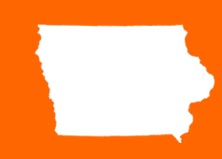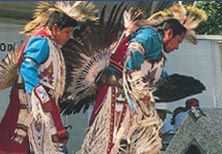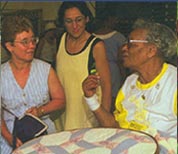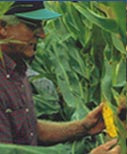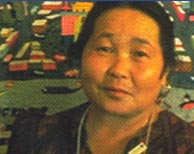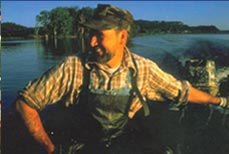|
LESSON:
This indicates the name of the lesson and its number. Each lesson is associated with a primary subject area, but, the lessons can be multi-disciplinary. A lesson on African-American blues in Iowa crosses language arts, social studies, and music, for example.
OBJECTIVES:
These are the main learning objectives for the lesson. Their scope and depth, but not cognitive type, will vary depending upon whether the lesson is taught at a lower or higher grade.
GRADE LEVELS:
This indicates the recommended grade levels for the lesson.
CROSS REFERENCES: INSTRUCTIONAL PROGRAM, PRAIRIE VOICES:
This indicates possible places to conduct the lesson in the instructional program of studies, including the primary disciplinary category but also others. Also referenced is the lesson plan in the State Historical Society of Iowa Prairie Voices heritage curriculum.
INFORMATION/CONCEPTS:
This identifies the key concepts and knowledge to be conveyed by the lesson.
FOLKLIFE BACKGROUND:
This provides the substantive topical background on the tradition needed for the lesson.
QUESTIONS TO BE ANSWERED:
This offers some general questions to be addressed in the lesson. They can serve as discussion starters for students, or as statements formulated as a result of the lesson inquiry.
HANDOUTS/READINGS:
This indicates the handout(s) included in the lesson plan, if any, as well as supplementary readings in the Festival of Iowa Folklife program book and the liner notes of the Iowa State Fare compact disc.
MEDIA SUPPORT:
This refers to one or the other videotapes or a selection on the compact disc.
IOWA ROOTS INTERVIEWS:
This links to
stories, music, and talk with traditional artists from a variety of ethnic, geographic, occupational, and religious groups found in Iowa.
SUGGESTED METHODS:
This suggests classroom procedures to the teacher.
STUDENT ACTIVITIES:
This describes possible student activities for the lesson to be accomplished either in class, at home, or within the community. Activities will vary in complexity depending on grade level.
HOME/COMMUNITY CONNECTION:
This suggests ways in which knowledge from home or the community can be brought into the classroom, and how students can find or generate knowledge in home and community settings.
STUDENT/SENIOR CITIZEN EXCHANGE:
This offers ways for students and senior citizens to work together on issues and information relating to the lesson.
|
